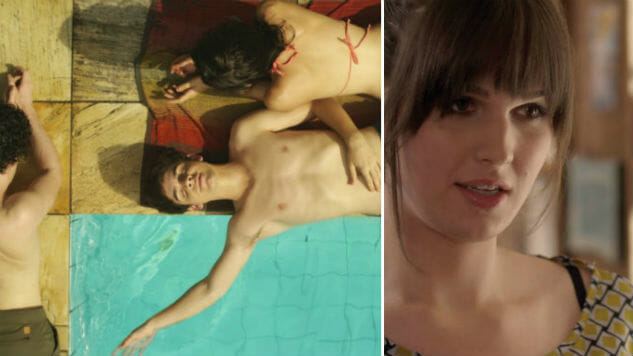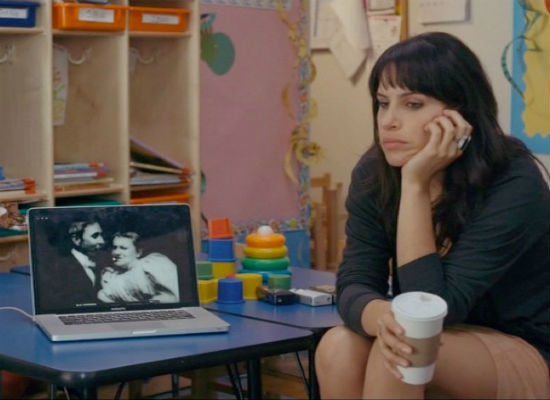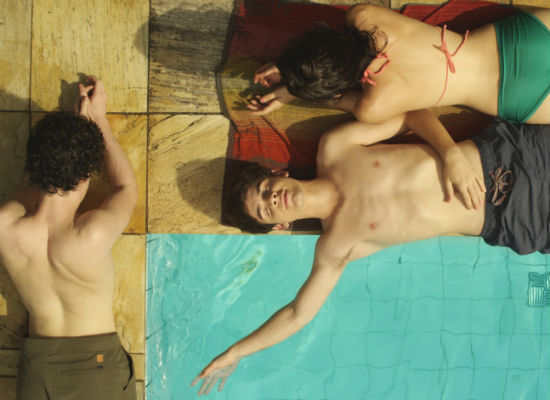
Our media’s cultural mirror has rapidly evolved during the last half-decade to reflect a more realistic myriad of non-heterosexual experiences. From asexual to pansexual, it’s refreshing to see those often kept in the dark given the spotlight. What’s more, we’re seeing LGBT characters developed beyond the caging tropes and harmful stereotypes that have plagued them for decades. Queer-focused stories aren’t required to center on suppressed identity, taboo love affairs or tragic deaths. Profound coming-of-age stories, hilarious tales of revenge and quirky romances can also belong to those not straight of heart.
Telling an honest, nuanced and engaging story is difficult enough without the responsibility of depicting a frequently misrepresented community. From shorts and documentaries to non-English language features and film festival darlings, these movies boast not only a compelling narrative, but expertly (and respectfully) highlight the diverse experiences of the LGBT population. Here are five films released since 2010 that don’t just challenge perceptions of queer sexuality, but remind us that a life lived less straight isn’t a life lived less humorously, adventurously, or underwhelmingly ordinary.
1. Appropriate Behavior (2014)

By default, being a twenty-something is messy—whether it’s dealing with crumbling relationships, jobs you’re too inexperienced for or the lies you tell to appease your parents. Desiree Akhavan explores that universal experience of untangling our identities in 2014’s Appropriate Behavior. Shirin is a secretly bisexual woman fresh out of a break-up and dedicated to getting ?over her ex-girlfriend. But Shirin’s dispirited attempts to push every aspect of her life back on track fall awkwardly and disappointingly flat at every turn. Shirin can talk her way into a job and a date, but can she keep either? Appropriate Behavior follow one woman’s journey through life telling everyone she’s an adult … until she accidentally becomes one.
Rather deftly, Akhavan’s film serves as a commentary on translation—the differences between the language we use, the things we actually mean, and how it all gets twisted. The narrative plays with Shirin’s identities—as an Iranian, a woman, a millennial, and a bisexual—sometimes hilariously, other times rather poignantly. All 86 minutes of the film are spent watching Akhavan’s character desperately and unsuccessfully try to say what she wants. But as the responsibilities, one night stands and brush-ins with her ex mount, Shirin begins to realize that the real trick to communication is taking the time to understand yourself before trying to communicate that to someone else. Appropriate Behavior is undoubtedly a comedy, but also a heartfelt look at how we learn to say what we mean and be who we are.
2. (A)sexual (2011)

For the general public, sexuality exists on a concrete spectrum: straight and gay. But there are those who live in the in-between, the place where gender attraction becomes a blurred mess of sometimes, only if, and not at all. Angela Tucker’s documentary, (A)sexual, centers on the latter category, a diverse community of people who aren’t sexually attracted to anyone, ever. Through first person accounts, interview clips, and research data, (A)sexual explores the larger social and scientific discourse surrounding the queer community’s most confounding orientation. As the film asks viewers to investigate the mechanics of their own desire, arousal, intimacy and attraction, a larger discussion unfolds about what place physical romance has in a relationship and where a sex-less identity fits into our sex-driven culture.
In addition to challenging the idea that asexuals are “broken,” Tucker thoroughly examines what it means to identify with that label. The film shines most, however, in its ability to re-shape general conversation around the boundaries and expectations of love. Are physical and emotional intimacy necessary to sustain a lasting bond? How do you attain (and maintain) a partnership when typical feelings of desire, arousal and attraction don’t guide your relationship? If love’s definition can’t be concretely defined, why are we so insistent that sex is a part of it? (A)sexual picks apart how we define normal relationship behavior by questioning our unflinching acceptance of sex without love, and our hesitancy to conceptualize love without sex.
3. Boy Meets Girl (2014)

A small-town Kentucky teen trying to find the “one” gets caught in a sexually confusing, but totally endearing love triangle in Eric Schaeffer’s Boy Meets Girl. Ricky is a town beauty, known for her outspokenness, wit, fashion sense and being trans. When the equally beautiful Francesca arrives in town for her engagement, she’s drawn to Ricky’s charismatic nature. The connection begins as a simple and effortless friendship, but both girls find their mutual interests and understandings quickly morph into something more. The budding relationship gets complicated when Ricky’s best friend becomes jealous, and Francesca’s fiance finds out. As Ricky balances falling in love and making her dreams come true, she finds that the “one” thing she’s been looking for is right in front of her.
We tend to unconsciously politicize transgender films, but Boy Meets Girl dodges that bullet entirely. The film’s ability to be nothing but a sincere romance with a dash of quirky humor makes it a stand out among the handful of trans-oriented film offerings. From having the “sex talk” with your best friend to your first time with the town’s beautiful newcomer, Boy Meets Girl celebrates the frivolity and fragility of young love and young dreams. At the same time, Boy Meets Girl doesn’t shy away from its main character’s identity. Instead, it’s used as a lens to explore the sometimes over-complicated nature of sexual identity. At the end of the day, Schaeffer’s film is a touching, sweet and fearless portrayal of women falling in love.
4. Stealth (2015)

This American Film Institute thesis film follows a young trans tween as she transitions into a new environment. When we first see Stealth’s Sammy, she’s stuffing her bra in a women’s changing room. This moment, like many others in the film, is a glaring metaphor for Sammy’s internal tension over fitting in at her new school. See, this isn’t her first rodeo, and she’s terrified of having to go to yet another new school if her secret is revealed. But when Sammy meets two girls and they immediately like Sammy, she feels that this time could be different. Then Sammy gets the ultimate girlhood invitation—a sleepover invite. While Sammy is eager to go, her mother is fiercely opposed, terrified by the threat of exposure it presents. But Sammy is determined to live her life wholly as girl. If she doesn’t go to this sleepover, how will she ever truly fit in as the person she is?
A film festival hit, Stealth is a well-executed story about the fears and desires young girls face during a pivotal period of growth. Sammy is a trans girl, which we often equate to having an entirely separate set of femalehood issues than cis girls face. While Stealth manages to realistically and respectfully demonstrate Sammy’s unique experience, director Bennett Lasseter and writer Melissa Hoppe challenge notions about who gets to have what narrative. In that sense, much of what we see isn’t an experience of a trans girl, but a genuine look at a pivotal time when tween identities are both impressionable for and imperative to social survival. The gateway to girlhood is full of challenges, from gossip and fights with your mother, to girls-only parties and finding true friends. Sammy navigates the maze with grace and veracity, unwilling to compromise who she is—a strength admirable at any age.
5. The Way He Looks (2014)

Based on Daniel Ribeiro’s 2010 short I Don’t Want to Go Back Alone, the Brazilian drama The Way He Looks (Hoje Eu Quero Voltar Sozinho) follows one teen’s ingenious coming-of-age story. Consistency is at the center of Leo’s world, from weekly visits with his grandmother to the walk home from school with his best friend, Giovana. That’s because Leo is blind, a condition that makes adapting to unforeseen changes difficult. As the high schooler’s desire for self-sufficiency grows, his behavior begins to confuse and alienate those closest to him. Much of that growing disconnect stems from his new friendship with Gabriel, a boy whose innocent insensitivity towards Leo’s visual impairment forces the shy teen out of a stifling routine.
Ribeiro’s exploration of the experiences that catapult us through the complicated throes of teenhood is at times subtle, but always grounded and ultimately the film’s greatest strength. When and how do we become independent from our parents? What type of verbal or physical commitments does a relationship require? Where is the line between friendship and something more? And most interestingly, what does it say about the biology of sexuality, and the chemistry of love, when you can’t see the person you’re attracted to? The Way He Looks is no traditional tale of growing up. It’s a tender illustration of the coming out we all experience as we cross the threshold of young adulthood.
Abbey White is currently between a post-bacc journalism program and graduate school. She contributes to geek and entertainment sites The Mary Sue and ScreenSpy when she’s not busy bingeing Netflix or running around some comic con. You can follow her on twitter.